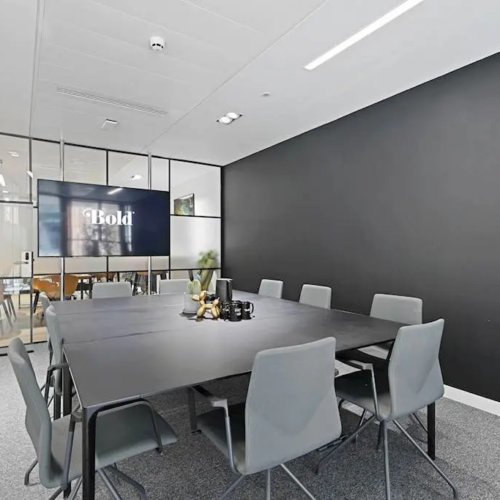A successful training session can be the difference between what makes your company skyrocket instead of it fizzling out to be forgotten. The difference can be detrimental because if your employees don’t receive the right training they’ll cost you money rather than generate more. So make sure to get this one right. Invest proper time researching, spend some money on the space, and hire a real expert for your session. We can assure you that it’ll be worth it.

What Is a Training Session?
To start this article out we’d like to make sure we’re on the same page regarding what a training session even is.
It might sound like another one of those trendy words being thrown around recklessly in startup circles but it’s actually a great concept that will help you take your business to the next level. We’d even go so far as to say it couldn’t be further from a trend. Training employees has always been a part of the corporate world.
A training session is a course or workshop aiming to up-skill your employees and help them develop their competencies further. Usually, this is done through exercises and lectures where everyone’s ideas and input are encouraged. Training sessions, brainstorms, workshops, and interactive meetings are all in the same landscape where the differences aren’t necessarily clear-cut.
Usually, a successful training session is a change from your normal company routines. This can be done through having someone externally come to you to train employees and give some fresh input. It’s also always a good idea to hire a space somewhere that’ll trigger creativity for you and the team.
A training session should always be aligned with company needs and areas you need to upskill in. With a clear goal, you’ll know when you succeed.
Now, we’ll dive into how to successfully plan a training session and what signifies a good training session venue.
Planning a Successful Training Session – 5 Easy Steps

It’s not easy organising a training session that will motivate, upskill, and interest employees. We know venues but to get the real down-low on corporate training sessions we asked some experts in the area to give us their best advice. They helped us figure out what signifies a good session and how you can plan for success. Careful planning and preparation is key to most meetings and event, but how do you turn a good session into a great one?
Davis Nguyen is the founder of My Consulting Offer, a top program that helps people land their dream jobs in management consulting. After becoming a full-time entrepreneur in 2018, Nguyen has helped over 500 people launch careers in consulting, grown his business to seven figures, and was featured at TEDx. He says that it can be a real challenge planning a training session but there are 5 things you can use to get started: objectives, format, audience, content, and logistics.
We took the help from some other experts too that all said similar things. Here are the top five tips that’ll make training more efficient, resourceful, and fun for all attendees. With
1. Define Your Objectives
What do you want your participants to learn? What skills or knowledge do they need to acquire? Be as specific as possible.
Davis Nguyen
Knowing what it is that your planning is Nguyen’s first advice and this is something many others seem to agree on. Don’t just throw yourself head first into planning a training session before knowing what it is that you want to achieve.
When you’ve defined this it’s time to move on to the next step but don’t skip ahead. Knowing exactly what the goal is when conducting training is key to a successful session in the end.
2. Choose a Format
Will your session be lecture-based, or will it involve hands-on activities? Make sure the format you choose is appropriate for your objectives.
Davis Nguyen
Format is everything when it comes to training sessions and when you’ve defined your why it’s time to get on to the how. Be creative here and think about solutions that is a bit unusual. It’ll help maintain the interest of your audience if you early on establish that this is going to be something out-of-the-ordinary.
Different setups might be brainstorming sessions, lectures, workshops, interactive training, or trying new techniques in every day tasks. You can even include more than one of these ideas and play around with combining formats.
3. Consider Your Audience
Who will be attending your session? What are their needs and expectations? Tailor your content and delivery to them.
Davis Nguyen
Melinda Marcus has led training sessions for global audiences on how to read people and influence big decisions. We got a hold of her to answer what her best advice is when planning a training session. Her most important point was to really make sure you tailor the session to the client’s needs.
She highlights that it makes a huge difference to customize her sessions to the exact needs of the clients. That means understanding the client’s challenges and providing an interactive training session that is not only informative, but also experiential, surprising and fun.
I have virtual meetings or calls with the organizers in advance and then I put together a program that generates high audience ratings and sustainable impact.
Melinda Marcus
So take the experts’ advice and always think about your audience when planning for a training session. One size fits all is not the way to go if you want to have the chance to really impact your audience.
4. Create Engaging Content
Your participants will be more likely to learn if they’re interested in what you’re teaching. Make sure your materials are well-organized and engaging.
Davis Nguyen
Simon Hall has conducted quite a few training sessions to say the least and is a course leader in communication skills at the University of Cambridge. He’s a former BBC News reporter and runs his own business communication consultancy, Creative Warehouse. One could say Simon is one of the most qualified people out there when it comes to how successful training is conducted and we will!
His secret to successful courses is to keep it interactive. When you do you’ll be able to keep people’s attention for longer and everyone will stay interested throughout.
It has to be interactive – from the very start. I always start my courses with a question to the group to break the ice and immediately establish what kind of a session it’s going to be.
Simon Hall
Hall also highlights how important it is to include questions to the audience when planning the content for a training session. 90 seconds without a a question, a quiz, interaction, or some sort of exercise is too much, he says. When planning his sessions Simon always changes things like this to keep everyone fully engaged. He says it’s something you have to work on but that it’s always worthwhile.
5. Plan for logistics
Consider things like location, timing, equipment, and food and beverage needs. Make sure everything is taken care of so you can focus on delivering a great session.
Davis Nguyen
This is something that’s particularly important when choosing your training session venue. Always check and double-check that the space you go for in the end has all the right amenities. If you know beforehand what it is that you need it’ll make the search much easier and quicker.
Picking the Right Venue for a Training Session

As mentioned above it’s important to know what specific amenities you require before starting your search. Simon Hall highlights the importance of going off-site for training sessions. He says:
[If you’re not in your usual office] you are much less vulnurable to distractions like a knock on the door asking to speak to someone, or people waving outside.
The psychology of being away from the office is also much better. It feels new, interesting and exciting, rather than mundane.
Simon Hall
Davis Nguyen once again brings up how important it is to tailor the venue to the needs of the specific session you’re conducting. Factor in things like group size, type of training, and budget. Some common venue types include conference rooms, meeting rooms, and outdoor venues. What you choose to go with should be dictated by what it is you’re planning more specifically.
Melinda Marcus has more specific advice such as sound and sight lines to the speaker and the slides. This gives participants a more memorable experience. She personally likes venues where there’s the option to have seating at tables so participants can partner with someone seated next to them or have tables work together as a team.
Another more specific advice from Simon Hall is that the room should always be at a good temperature, it should always be cool. “There is nothing worse than a hot or warm room to sap energy and spirit!” he exclaims.
There are plenty of fantastic and creative spaces for training out there but in conclusion the top pick for you might not be the same for others. Carefully choose one that’s tailored to your needs and that has all the right amenities.



